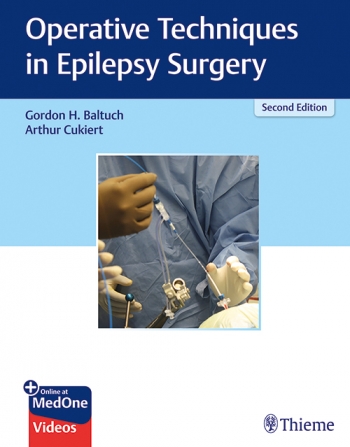|
|
|
| |
 |
|
|

|
-
推薦指數:



|
|
- 內容介紹
|
Operative Techniques in Epilepsy Surgery 2nd Edition
by Gordon H Baltuch (Author), Arthur Cukiert (Author)
Hardcover: 260 pages
Publisher: Thieme; 2 edition
Language: English
ISBN-10: 1626238189
ISBN-13: 978-1626238183
Product Dimensions: 8.7 x 0.8 x 11.2 inches
2020
An indispensable, single-volume resource on state-of-the-art epilepsy procedures from renowned international experts!
Epilepsy is a common neurological disorder affecting an estimated 1% of the population, about 20 to 30% of which experience seizures inadequately controlled by medical therapy alone. Advances in anatomic and functional imaging modalities, stereotaxy, and the integration of neuronavigation during surgery have led to cutting-edge treatment options for patients with medically refractory epilepsy. Operative Techniques in Epilepsy Surgery, Second Edition by Gordon Baltuch, Arthur Cukiert, and an impressive international group of contributors has been updated and expanded, reflecting the newest treatments for pediatric and adult epilepsy.
Seven sections with 30 chapters encompass surgical planning, invasive EEG studies, cortical resection, intraoperative mapping, disconnection, neuromodulation, and further topics. Twelve cortical resection chapters cover surgical approaches such as amygdalohippocampectomy; hippocampal transection; frontal lobe, central region, and posterior quadrant resections; and microsurgery versus endoscopy for hypothalamic hamartomas. Disconnection procedures discussed in section five include corpus callosotomy, hemispherectomy, and endoscopic-assisted approaches. Well-established procedures such as vagus nerve and deep brain stimulation are covered in the neuromodulation section, while the last section discusses radiosurgery for medically intractable cases.
Key Highlights
Chapters new to this edition include endoscopic callosotomy, laser-induced thermal therapy (LITT), and focused ultrasound
High-quality illustrations, superb operative and cadaver photographs, radiologic images, and tables enhance understanding of impacted anatomy and specific techniques
The addition of videos provides insightful step-by-step procedural guidance
This is an essential reference for fellows and residents interested in epilepsy and functional neurosurgery, and an ideal overview for neurosurgeons, neurologists, and neuroradiologists in early career stages who wish to pursue this subspecialty.
|
|
|

